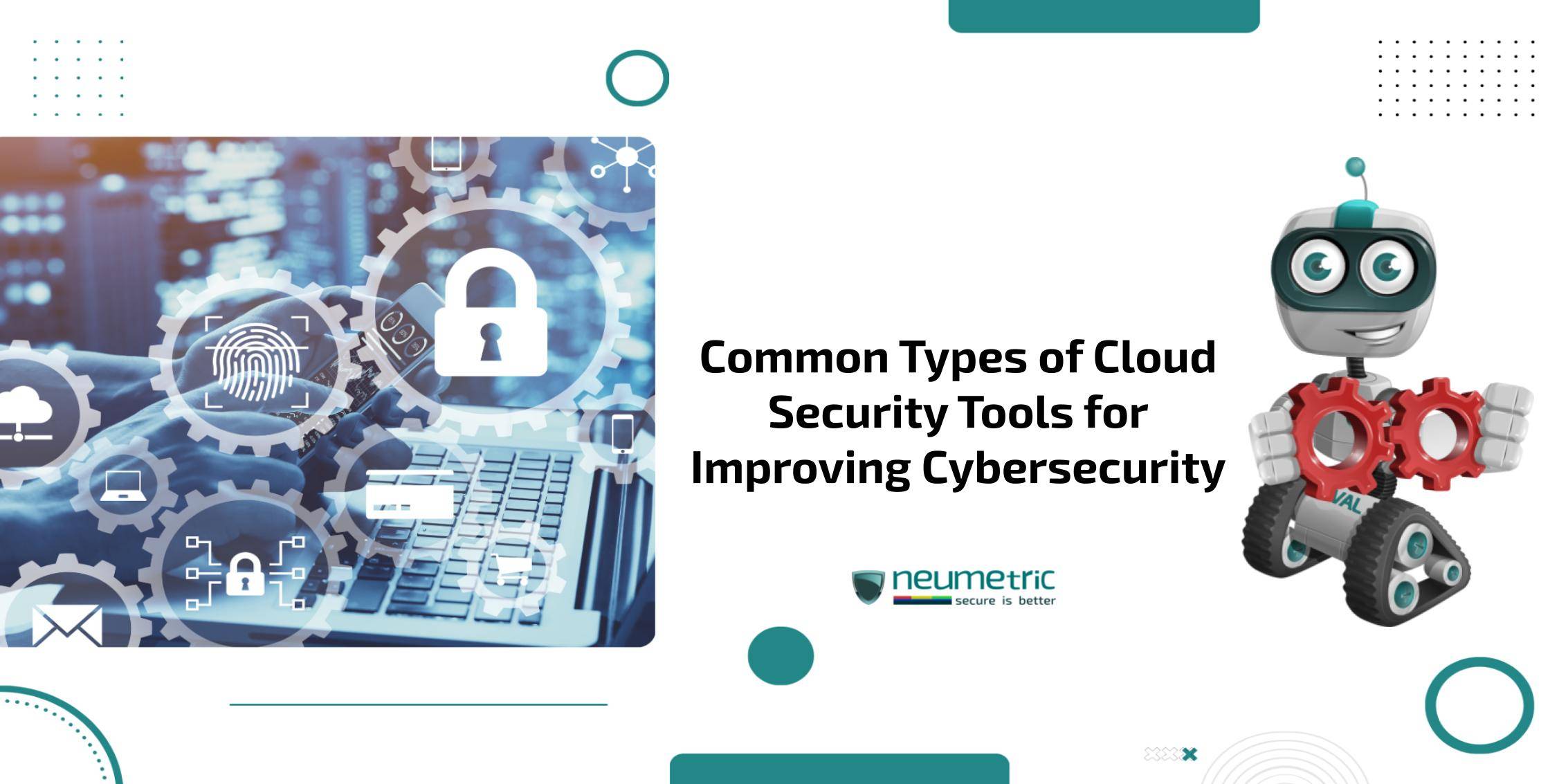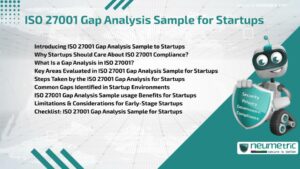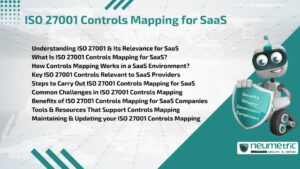Table of Contents
ToggleCommon Types of Cloud Security Tools for Improving Cybersecurity
Introduction
In the rapidly evolving digital landscape, the importance of cybersecurity cannot be overstated. As organizations increasingly migrate their data & operations to the cloud, the need for robust cloud security measures becomes paramount. This journal delves into the common types of cloud security tools that play a pivotal role in enhancing cybersecurity. From firewalls to compliance management tools, we will explore the diverse array of technologies designed to safeguard against a myriad of cyber threats.
Navigating this intricate terrain requires a nuanced understanding of the tools at our disposal. By exploring the capabilities & nuances of various cloud security tools, organizations can establish a comprehensive defense strategy to protect sensitive data & uphold the integrity of their digital infrastructure in the face of ever-evolving cyber risks.
Understanding Cloud Security
Cloud security is a dynamic & complex field that addresses the unique challenges posed by the cloud environment. As businesses leverage the benefits of cloud computing, they must also navigate potential risks, such as data breaches, unauthorized access & service disruptions. The foundational understanding of cloud security sets the stage for a deeper exploration of the tools that fortify these digital fortresses.
In this intricate landscape, encryption, identity & access management [IAM] & multi-factor authentication [MFA] emerge as critical components, safeguarding sensitive information & ensuring only authorized users have access. Continuous monitoring, threat detection & incident response strategies further strengthen the defense against evolving cyber threats within the cloud. As organizations delve into this dynamic realm, a proactive & comprehensive approach to cloud security becomes imperative, fostering resilience & adaptability in the face of an ever-changing cybersecurity landscape. Staying informed about the latest industry standards & best practices is paramount to establishing a robust defense in the cloud.
Common Types of Cloud Security Tools for Improving Cybersecurity
Firewalls & Intrusion Detection Systems [IDS]
Firewalls stand as the vanguard in defending against unauthorized access to a network. Acting as a barrier between a trusted internal network & untrusted external networks, firewalls scrutinize incoming & outgoing traffic based on predetermined security rules.
There are several types of firewalls designed for different levels of security:
- Packet-filtering firewalls: These basic firewalls examine packets in isolation & block or allow based on source/destination IP addresses & ports.
- Stateful inspection firewalls: More advanced than packet-filters, these firewalls examine network traffic contextually by monitoring the state of connections.
- Next generation firewalls [NGFWs]: Top-of-the-line enterprise firewalls that integrate capabilities like application awareness & intrusion prevention to offer complete traffic inspection.
- Web application firewalls [WAFs]: Optimized for securing web applications by providing protection from web-based attacks.
Complementing firewalls are Intrusion Detection Systems [IDS], which actively monitor network and/or system activities for malicious actions or policy violations. IDS can be network-based, watching traffic on the wire or host-based, monitoring system calls & application logs on individual computers. Integration between firewalls & IDS is crucial to maximize visibility & shut down threats rapidly.
Identity & Access Management [IAM]
In the cloud, managing user identities & controlling access is pivotal. IAM tools enable organizations to define & manage user roles, ensuring that only authorized personnel can access sensitive data & resources. Core components of Identity & Access Management include:
- Centralized Directory: Stores user attributes & access privileges to enforce permissions
- Single Sign-On [SSO]: Enables one login across applications & systems
- Multi-factor Authentication [MFA]: Adds extra identity verification for access
- Access Reviews: Routinely evaluates entitlements to maintain least privilege
- Identity Governance: Automates user lifecycle from on-boarding to off-boarding
By centralizing control of user access, IAM simplifies authorization while enhancing security & visibility across cloud environments.
Encryption Tools
Encryption serves as a cornerstone in securing data, both data-at-rest & data-in-transit.
- Symmetric encryption: Single private key to encrypt & decrypt data between parties
- Asymmetric encryption: Paired public & private keys for encryption & decryption
- Hashing algorithms: One-way cryptographic scrambling like SHA-1 or MD5
- SSL/TLS protocols: Secure network traffic encryption leveraging both symmetric & asymmetric cryptography
Managing & safeguarding encryption keys is paramount. Key management tools provide lifecycle management from generation to revocation while hardware security modules [HSMs] provide secure cryptoprocessor storage preventing key compromise.
Security Information & Event Management [SIEM]
SIEM solutions provide real-time analysis of security alerts, generating a comprehensive overview of an organization’s information security. Core SIEM capabilities include:
- Centralized logging: Collects logs & event data from security tools, servers, etc.
- Alerting: Triggers notifications for predefined correlation rules
- Threat intelligence integration: Incorporates external IOC & reputation data
- User & Entity Behavior Analytics [UEBA]: Identifies deviations from behavioral baselines
- Visualization: Enables data exploration with dashboards & workflow
By gathering & connecting data points across infrastructure, SIEM empowers threat hunting & rapid incident response.
Data Loss Prevention [DLP]
Data is a valuable asset & preventing its loss or leakage is a critical concern. DLP tools monitor, detect & prevent unauthorized access & transmission of sensitive information. DLP capabilities include:
- Content inspection: Scans data-at-rest or data-in-transit for patterns indicating sensitive data
- Policy enforcement: Blocks or alerts per defined rules for data access/transfer
- Encryption: Secure sensitive information leaving the protected perimeter
For example, an organization can configure DLP to disable external transfer of files containing credit card data or alert if mass download of intellectual property [IP] occurs.
Anti-Malware & Anti-Virus Solutions
The threat landscape is rife with malware & viruses, making robust anti-malware & antivirus solutions imperative. These solutions employ signature-based detection, analyzing files & system activity for known threat signatures. However, modern advanced threats now also leverage machine learning [ML] & behavioral analysis to detect zero-day & fileless malware hard to catch with signatures alone.
Sandboxing provides another line of defense, allowing suspicious files to be tested & monitored in an isolated environment before reaching production systems.
Cloud Access Security Brokers [CASB]
CASBs act as intermediaries between users & cloud service providers, ensuring that security policies are enforced. As a cloud security gateway, CASBs integrate capabilities including:
- Data security: Encrypts & tokenizes sensitive data processed in the cloud
- Threat protection: Leverages malware analysis like sandboxing on cloud traffic
- Access control: Enforces identity-based policies for cloud applications
- Audit & compliance visibility: Monitors user activities for security events
Adoption of CASB enables centralized governance by intercepting cloud traffic without config changes to the applications themselves.
Vulnerability Scanning Tools
Identifying & patching vulnerabilities is crucial in maintaining a secure cloud infrastructure. Vulnerability scanning tools automate the process of discovering weaknesses, enabling organizations to proactively address potential points of exploitation. Prominent vulnerability scanning approaches include:
- Network scanning: Assesses vulnerabilities in discovered assets & open ports
- Database scanning: Audits database configurations & permissions
- Application scanning: Fuzz or attack inputs to uncover flaws
- Container scanning: Checks images for malware implants & misconfigurations
By continuously scanning infrastructure, these tools significantly accelerate identification & remediation of security gaps before they are exploited by attackers.
Multi-Factor Authentication [MFA]
Authentication is the linchpin of security & MFA adds an extra layer of protection by requiring users to verify their identity through multiple means. MFA requires at least two validation factors such as:
- Knowledge factors: Passwords, PINs, security questions
- Possession factors: Tokens, smart cards, mobile apps that generate codes
- Inherence factors: Biometrics like fingerprints & facial recognition
MFA safeguards cloud resources in the event of stolen credentials or passwords by necessitating additional proof of identity.
Incident Response & Management Tools
No security strategy is foolproof & incidents are inevitable. From automated incident response to incident management platforms, these tools play a pivotal role in minimizing the impact of security breaches. Key incident response capabilities:
- Monitoring & alerting: Flags potential incidents
- Case management: Structures investigation & tracks progress
- Playbook execution: Automates commonly-needed response processes
- Reporting: Documents incidents chronologically for later review
Orchestrating & automating incident engagement enables rapid containment of threats while capturing forensic detail on unfolding events.
Security Automation & Orchestration
Automation & orchestration amplify the efficiency of security operations by automating routine tasks & orchestrating complex workflows. Benefits of security automation include:
- Improved efficiency: Machines can act faster at scale
- Reduced human overhead: Removes fatigue factors around manual processes
- Enhanced reporting: Centralized audit trails recording actions taken
Common use cases involve policy & compliance checks, infrastructure hardening, patch management & cloud configuration monitoring.
Network Security Tools
Securing the network infrastructure is paramount in the cloud era. Some of the network security tools include:
- IPS: Monitors traffic flows to prevent intrusion threats in real-time
- VPN: Encrypted tunnels to securely access remote private networks
- Next-gen firewalls [NGFW]: Integrates threat prevention capabilities into NGFWs
Tools like software-defined networking & microsegmentation further strengthen network security by enabling dynamic configuration & additional compartmentalization.
Compliance Management Tools
As regulatory requirements become more stringent, compliance management tools are essential for ensuring that organizations adhere to industry-specific regulations. Compliance management platforms provide:
- Standards mapping: Links controls to regulations like PCI DSS, HIPAA, etc.
- Control validation: Tests & audits environments for adherence
- Policy enforcement: Can auto-remediate found deficiencies
- Reporting: Produces audit-ready reports demonstrating due diligence
They empower organizations to adapt as new requirements emerge while evidencing diligence.
Challenges & Best Practices in Implementing Cloud Security Tools
Implementing cloud security tools is not without its challenges. Among the challenges organizations encounter, ensuring seamless integration with existing IT infrastructure, addressing compliance requirements & managing the diverse nature of cloud environments stand out. Resistance from users may arise due to changes in workflow or concerns about the learning curve associated with new security tools.
Best practices around successful implementation involve:
- Conducting thorough evaluation of organizational needs & readiness
- Ensuring stakeholder buy-in through education & transparency
- Developing policies guiding tool ownership, maintenance & evolution
- Building integration touchpoints across infrastructure monitoring & response systems
- Providing training resources & support channels to facilitate user adoption
Once deployed, regular tool evaluations, automated updates & collaboration with cloud service providers contribute to the ongoing effectiveness of these tools, fostering a resilient & adaptive cloud security posture.
Conclusion
In conclusion, the landscape of cloud security is diverse & dynamic, with an arsenal of tools designed to thwart evolving cyber threats. As organizations continue to embrace the cloud, investing in & understanding these tools becomes imperative. The journey through the various types of cloud security tools outlined in this journal offers a comprehensive view of the strategies & technologies available to fortify digital assets against an ever-evolving threat landscape.
It is crucial for businesses to remain vigilant, continually assess their security posture & adapt to emerging challenges to stay one step ahead in the ongoing battle for cybersecurity supremacy. Moreover, fostering a culture of cybersecurity awareness & collaboration across all levels of an organization enhances the overall effectiveness of implemented tools. Regular training programs & staying abreast of industry advancements contribute to a proactive security stance.
By embracing a holistic approach, organizations can not only safeguard their digital assets but also build trust with stakeholders in an era where data protection is paramount. The journey towards robust cloud security is an ongoing commitment & staying informed & adaptable is key to navigating the evolving threat landscape successfully.
Frequently Asked Questions [FAQ
Why is Multi-Factor Authentication [MFA] considered a game-changer in cloud security?
Multi-Factor Authentication [MFA] adds an extra layer of defense by requiring users to jump through a couple more hoops before gaining access. Think of it as a bouncer checking your ID & also asking for a secret handshake. This not only keeps the bad actors out but also ensures that even if your password takes an unscheduled vacation, your data stays put. The additional factors create significant additional work for attackers, making account compromise extremely unlikely.
Can you explain how Cloud Access Security Brokers [CASBs] act as the middlemen between users & cloud service providers?
Imagine CASBs as the wise elders in the cloud village. They stand between you & your cloud apps, making sure everything follows the security rules. They enforce policies, keep an eye on data going in & out & basically make sure the cloud party stays safe & secure. It’s like having a security guard for your digital world. Rather than having to configure each cloud app itself, the CASB centralizes security controls & protection while securely bridging access.
Why do organizations need to worry about compliance management tools in the realm of cloud security?
Think of compliance management tools as the rule books in the cybersecurity game. They help organizations stick to the playbook & ensure they’re playing by the regulatory rules. In the fast-paced world of the cloud, where rules can change like the weather, these tools make sure you have your regulatory umbrella handy, keeping you dry & compliant.
In addition, compliance management tools in cloud security help organizations maintain a proactive approach by continuously monitoring & adapting to evolving regulatory requirements, reducing the risk of non-compliance penalties & legal consequences. These tools also contribute to building trust with customers & stakeholders by demonstrating a commitment to robust data protection practices in an ever-changing digital landscape.





